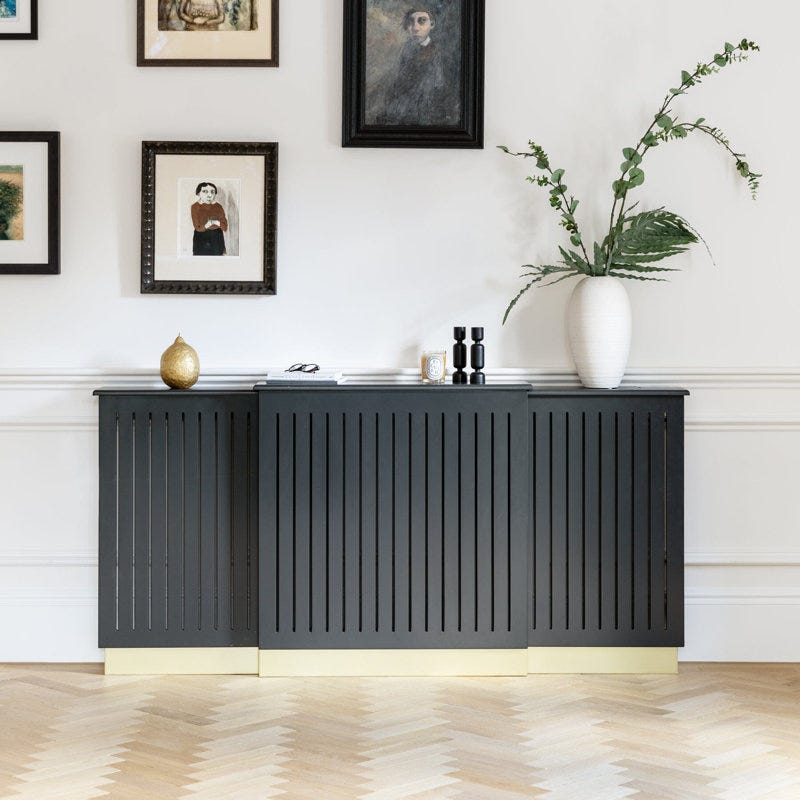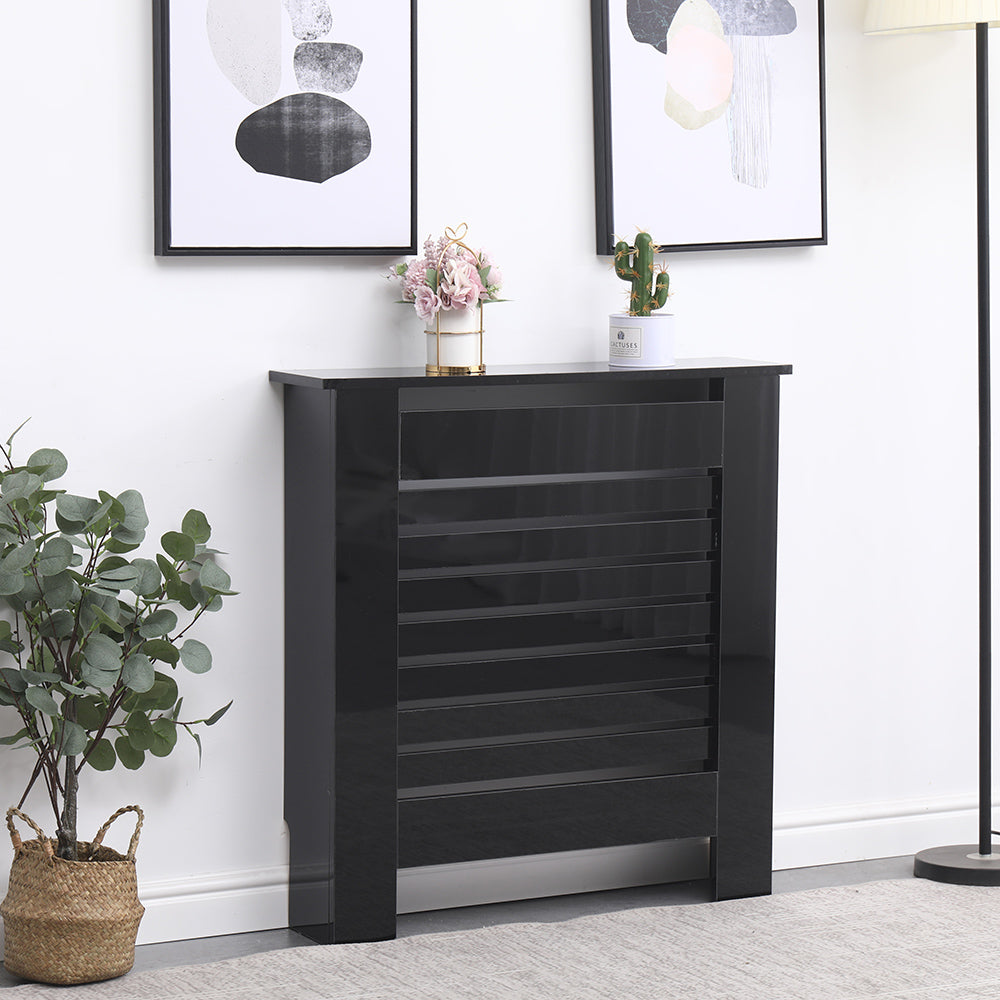DIY Tips for Installing a Radiator Cover easily
DIY Tips for Installing a Radiator Cover easily
Blog Article
Radiator Covers: Recognizing Products, Layouts, and Advantages
Radiator covers serve both aesthetic and functional functions within a home, using a range of materials such as metal, hardwood, and mdf to suit various layout choices. Picking the ideal radiator cover includes comprehending the nuances of materials, styles, and their connected benefits.
Kinds of Materials


Wood covers, commonly crafted from woods such as oak or maple, offer a classic, warm appearance that complements typical interiors. Their longevity and ability to be stained or painted add to their versatility. Steel covers, normally made from steel or aluminum, are preferred for their toughness and contemporary appearance, commonly including sleek lines that boost modern spaces.
MDF, a made wood product, is preferred for its cost-effectiveness and simplicity of customization. It can be repainted or finished to match existing style while using a smooth surface area. Plastic covers, while less common, are light-weight and immune to dampness, making them suitable for damp environments.
Inevitably, the option of product for a radiator cover need to align with the property owner's style preferences, functional needs, and the details setting where the cover will certainly be set up. Each material offers a distinct character, guaranteeing that there is a choice to fit every preference and setting.
Popular Design Styles
Emphasizing visual allure, preferred style styles for radiator covers reflect a variety of tastes and interior decoration fads. Traditional layouts commonly include elaborate woodwork and luxuriant detailing, making them suitable for vintage-inspired or classic insides. These covers generally integrate sculpted components, giving a cozy and welcoming feel to any area.
In comparison, contemporary layouts concentrate on minimal looks, characterized by clean lines and understated beauty. Products such as steel or sleek wood with a smooth finish are commonly used, enabling these covers to mix effortlessly right into modern-day spaces. Industrial styles, on the various other hand, welcome basic materials like exposed metal and concrete, adding a strong statement to loft or urban settings.
For those seeking a special touch, bespoke layouts use personalization alternatives that satisfy specific choices, enabling homeowners to choose colors, patterns, and products that match their decor. In addition, farmhouse-style covers integrate rustic elements, featuring troubled timber and simple forms that stimulate a comfy, country charm.
Benefits of Radiator Covers
Radiator covers not only improve the visual allure of a room yet additionally offer numerous sensible benefits that make them a rewarding enhancement to any type of home. One of the primary benefits is safety and security, particularly in households with children or pet dogs. Covers reduce the threat of burns from warm radiator surfaces, making certain a more secure environment.
Additionally, radiator covers can improve power effectiveness. By directing warmth into the area as opposed to permitting it to escape, they help keep a regular temperature level, reducing home heating costs in time. This is specifically valuable in older homes where radiator systems may be less efficient.
Another significant benefit is sound link reduction. Radiators can in some cases create unwanted noises throughout procedure, and covers can aid smother these sounds, contributing to an extra peaceful space. Furthermore, radiator covers can be practical, offering additional storage space or screen space, therefore maximizing the utility of often-overlooked locations.
Finally, they can secure radiators from dust and particles, which can impede performance and increase upkeep needs. With these integrated benefits, radiator covers become a sensible remedy for click to investigate improving both the capability and design of any type of home setting.
Setup Factors To Consider
Installing radiator covers requires careful consideration to make sure both functionality and safety and security (Radiator cover). Evaluate the dimensions of your radiator and the surrounding area to guarantee an appropriate fit. Exact measurements are vital; an ill-fitting cover can block warm circulation or develop safety and security dangers
Following, assess the material of the cover. While timber supplies aesthetic appeal, steel choices may supply far better resilience and warmth resistance. Take into consideration the weight of the cover also; much heavier covers may require additional assistance or reinforcements to prevent drooping or damages gradually.
Ventilation is another critical element. Covers must include ample airflow to avoid overheating and maintain effective home heating. Look for layouts with slats or perforations that allow warmth to distribute without blockage.
Additionally, make sure that the cover is securely placed to avoid mishaps, particularly in homes with kids or family pets. Radiator cover. It's a good idea to adhere to the maker's setup standards carefully and, if essential, get in touch with an expert for complex installments
Maintenance and Treatment Tips
Correct maintenance of radiator covers is important for ensuring their durability and ideal efficiency. Regular cleansing is necessary; dust and particles can collect, obstructing air flow and decreasing warm performance. Make use of a soft, wet fabric or a microfiber duster to gently wipe the surface, preventing harsh chemicals that may damage the finish. For repainted or wood covers, consider an appropriate gloss or safety layer to keep their appearance.
Examine the covers regularly for indications of wear or damages, such as fractures or peeling paint. Attending to these problems immediately can prevent additional wear and tear. Ensure that the covers are safely fastened and look for any kind of loose screws or installations, as resonances from the radiator can loosen them over time.
In cooler months, prevent putting hefty things or decorative products on top of the radiator covers, as this can hinder heat circulation and trigger unnecessary anxiety to the structure. Lastly, consider seasonal upkeep by removing the covers for detailed this page cleansing and evaluation throughout warmer months when the home heating system is non-active. Adopting these straightforward treatment pointers will certainly boost the performance and aesthetic appeal of your radiator covers, ensuring they serve their objective successfully for several years to come.

Conclusion
In summary, radiator covers work as useful and aesthetic enhancements to domestic spaces. The varied variety of materials, including woods, plastic, mdf, and steel, permits alignment with numerous layout styles such as traditional, contemporary, industrial, and farmhouse. The benefits of these covers prolong beyond safety and power effectiveness to consist of extra storage space and dirt security. Cautious consideration of installation and maintenance more guarantees the durability and efficiency of radiator covers in any kind of home environment.
Radiator covers serve both aesthetic and functional objectives within a home, offering a variety of products such as mdf, metal, and wood to match various style choices. Selecting the ideal radiator cover includes comprehending the subtleties of materials, designs, and their associated advantages.Highlighting aesthetic charm, popular style styles for radiator covers mirror a variety of tastes and interior layout fads.Radiator covers not only enhance the aesthetic appeal of a space however also supply a number of functional benefits that make them a worthwhile enhancement to any type of home. Take into consideration the weight of the cover as well; heavier covers may call for additional assistance or reinforcements to avoid sagging or damage over time.
Report this page